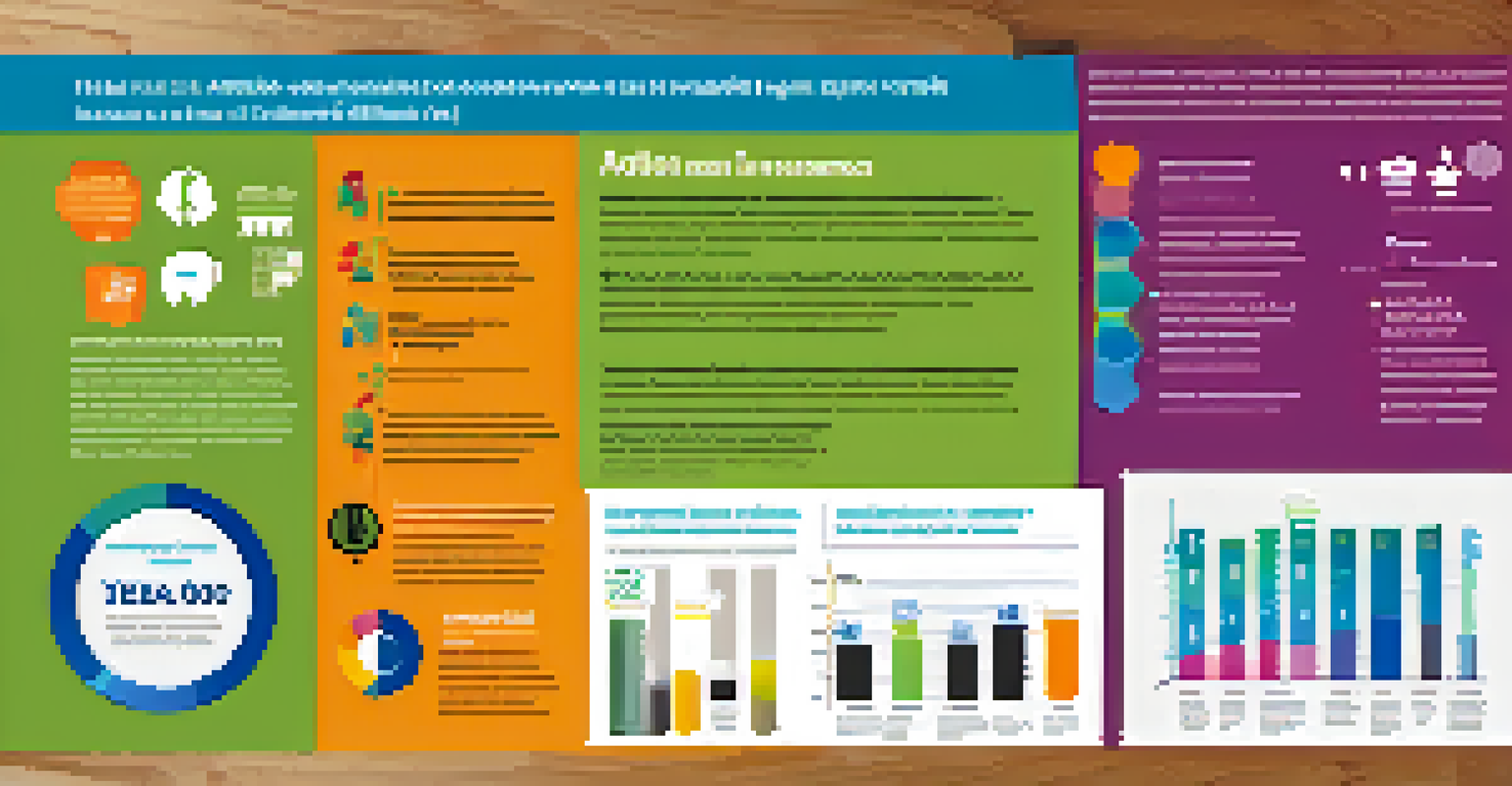Digital Literacy as a Tool for Addiction Prevention Education

Understanding Digital Literacy in Today’s World
Digital literacy refers to the ability to effectively navigate, evaluate, and create information using digital technologies. In our increasingly online world, it’s essential to empower individuals with the skills to discern credible sources from misleading ones. This competence not only enhances learning but also plays a pivotal role in educating about various issues, including addiction.
The internet is becoming the town square for the global village of tomorrow.
As we dive into the realm of addiction prevention, digital literacy becomes a vital tool. It equips individuals with the knowledge to seek out reliable information regarding addiction and its consequences. For instance, a person armed with digital literacy skills can identify trustworthy resources about substance abuse, helping them make informed decisions and seek help more effectively.
Furthermore, digital literacy fosters critical thinking. By questioning the information they encounter online, individuals can better understand the narratives surrounding addiction, including glamorized portrayals in media. This critical engagement is essential in building resilience against potential addiction triggers.
The Role of Online Resources in Addiction Education
The internet is flooded with resources about addiction—some helpful, others misleading. Digital literacy empowers individuals to sift through this vast sea of information to find credible resources, such as educational websites and support forums. For instance, knowing how to check the credibility of a source can mean the difference between accessing helpful information and falling prey to harmful myths.

Moreover, online communities can be invaluable for those seeking support. Digital literacy allows individuals to engage with these communities safely, share experiences, and learn from one another. This interactive aspect can foster a sense of belonging and understanding, which is crucial for those grappling with addiction or seeking to prevent it.
Digital Literacy Enhances Decisions
Digital literacy equips individuals with the skills to discern credible information about addiction, enabling informed choices.
Platforms like social media can also serve as effective educational tools. By following reputable accounts that share facts and personal stories about addiction, individuals can become more informed and empathetic. This not only aids personal understanding but can also help in spreading awareness among peers.
Teaching Digital Literacy as a Preventive Measure
Incorporating digital literacy education into addiction prevention programs is crucial. By teaching individuals how to navigate online information effectively, we equip them with the tools to make informed choices. Workshops that focus on recognizing reliable sources and understanding online risks can empower participants in their fight against addiction.
Digital literacy is not just about knowing how to use technology, but also about understanding how to find and evaluate information online.
For example, educational institutions can integrate these lessons into their curricula, helping students develop skills from a young age. This proactive approach not only prepares them for the digital landscape but also instills a sense of caution regarding online content related to drugs and alcohol. Knowledge is power, and in this case, it can be a lifesaver.
Additionally, community organizations can host digital literacy sessions tailored specifically towards addiction prevention. These sessions can include discussions on how to spot misinformation and the importance of seeking help from credible sources, ensuring that individuals feel confident in navigating their digital environments.
Creating Engaging Digital Content for Prevention
To effectively educate about addiction prevention, the content must be engaging and relatable. Digital literacy enables content creators to develop materials that resonate with audiences, using platforms like videos, podcasts, and infographics. By presenting information in various formats, we can cater to different learning styles, making the message more accessible.
For instance, a well-crafted video that shares personal stories of recovery can be more impactful than a traditional lecture. This emotional connection not only raises awareness but also fosters empathy among viewers. Creative content can serve as a powerful tool to debunk myths and provide accurate information about addiction.
Addressing the Digital Divide
Ensuring equitable access to digital resources is crucial for effective addiction prevention education.
Moreover, interactive content, such as quizzes and polls, can encourage active participation. By engaging users in a fun way, we can motivate them to learn more about addiction and prevention strategies. This kind of digital literacy not only informs but also inspires action.
Addressing the Digital Divide in Addiction Education
While digital literacy is essential, we must acknowledge that not everyone has equal access to technology. The digital divide—disparities in access to digital resources—can exacerbate issues related to addiction. Addressing this gap is crucial for effective prevention education, as those without the necessary tools may miss out on vital information and support.
Communities must work together to ensure equitable access to technology and digital literacy programs. Initiatives such as providing free internet access in public spaces or offering workshops in underserved areas can help bridge this divide. By ensuring that everyone has access to digital resources, we empower all individuals to engage with addiction prevention education.
Furthermore, outreach programs can focus on teaching digital skills in conjunction with addiction education. By integrating these efforts, we can create a more inclusive environment where all community members feel equipped to confront addiction challenges effectively.
Empowering Families through Digital Literacy
Families play a crucial role in addiction prevention, and digital literacy can strengthen these bonds. By educating parents and guardians on how to navigate online resources, they can better guide their children in understanding the risks of addiction. This proactive approach fosters open communication and helps families address the topic of addiction in a safe space.
For instance, parents who are digitally literate can monitor their children's online activities and discuss any concerning content. This not only empowers parents but also helps children feel supported when navigating the complexities of digital media. Building this bridge between parents and children can prevent misunderstandings and promote healthy discussions about addiction.
Empowering Families Together
Educating families on digital literacy fosters open communication about addiction risks and strengthens relationships.
Moreover, family-oriented digital literacy programs can encourage collaborative learning. By engaging in activities that enhance their skills together, families can strengthen their relationships while becoming more informed about addiction prevention. This shared journey can be a powerful deterrent against addiction.
Conclusion: The Future of Digital Literacy in Prevention
As we look toward the future, the importance of digital literacy in addiction prevention education cannot be overstated. With technology continuing to evolve, equipping individuals with the skills to navigate this landscape is essential. Embracing digital literacy as a foundational element in education will foster informed communities capable of combating addiction effectively.
Incorporating these skills into various educational frameworks—schools, community organizations, and families—will create a more informed society. The collaboration between educators, families, and digital platforms can pave the way for a holistic approach to addiction prevention.

Ultimately, by prioritizing digital literacy, we can empower individuals to take charge of their own education and well-being. As we harness the power of the digital world, we can create a brighter future, free from the grips of addiction.